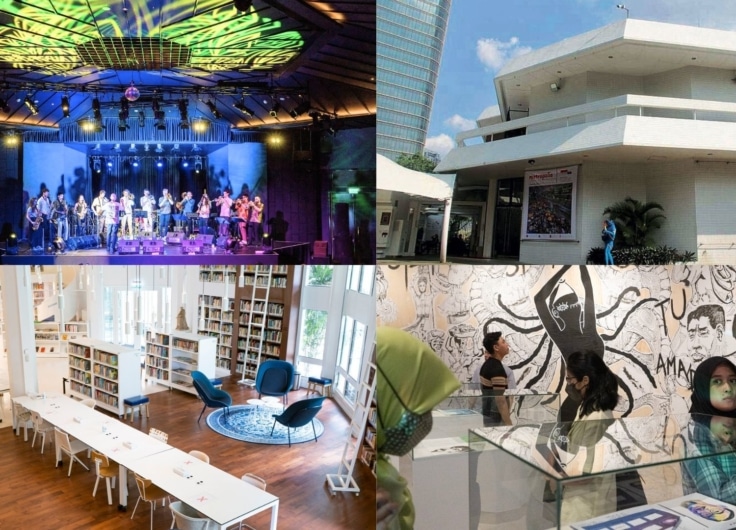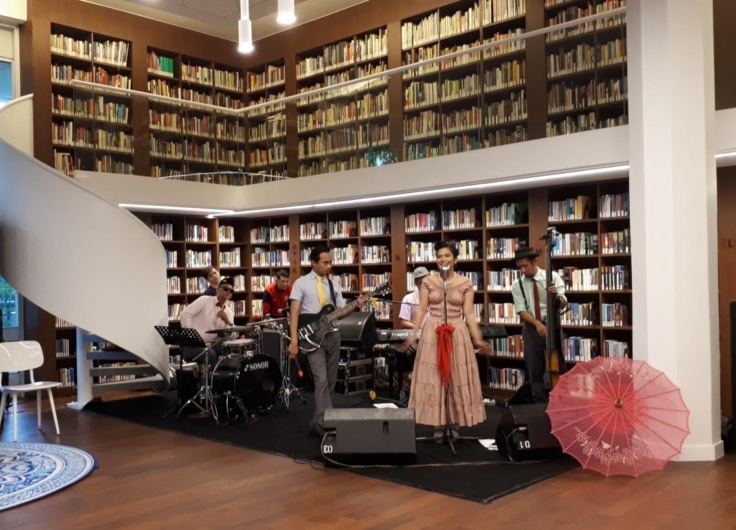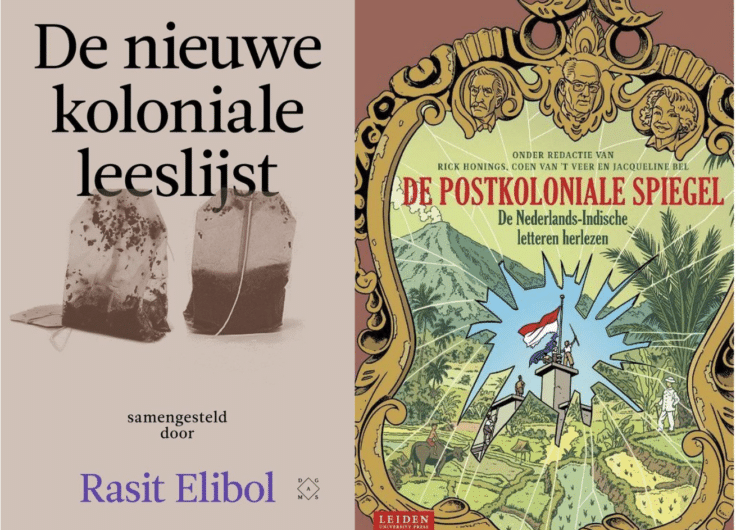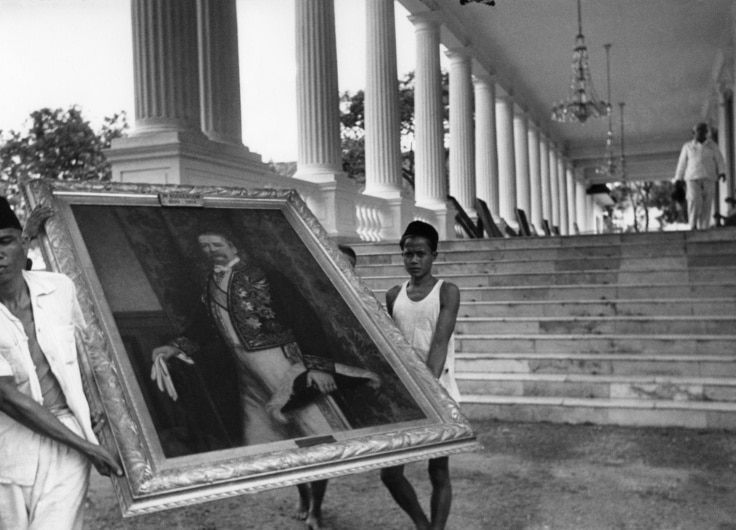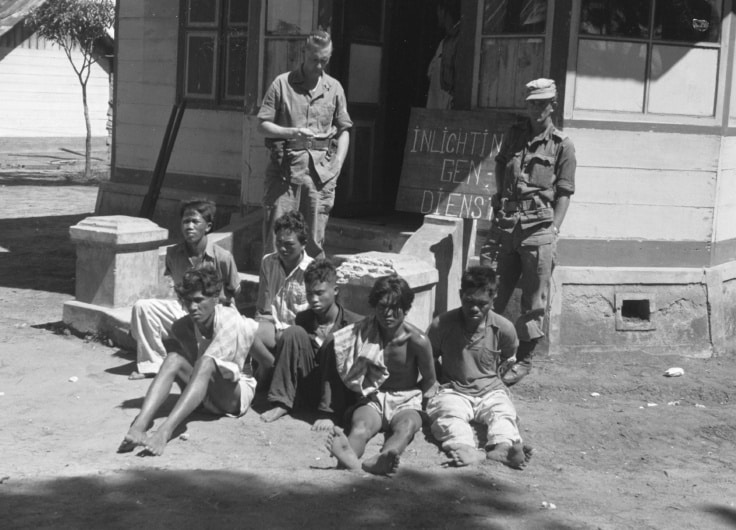The Story of the Erasmus Huis (1945-1960): The First Years of Postcolonial Indonesia
In a series of three articles, we sketch the story of Erasmus Huis (Erasmus House), the cultural centre of the Embassy of the Netherlands in Jakarta, in the context of cultural and diplomatic interactions between Indonesia and the Netherlands. This first article covers the first years of Indonesia’s independence, in which many Dutch colonial structures continued to be used.
“Freedom in name only”, which is how Indonesia’s first Prime Minister Sutan Sjahrir in his 1946 pamphlet Our Struggle described a situation in which his newly independent country would not be able to rid itself of foreign influences. This foreboding became a reality. The Netherlands did not accept Indonesia’s declaration of independence on 17 August 1945 and wanted to regain authority in their former colony of the Dutch East Indies.
Indeed, in the same year as Sjahrir’s pamphlet was published, Sierk Schröder, a well-known painter, was commissioned by the Dutch government to make a portrait of Queen Wilhelmina of the Netherlands. This portrait was to be hung in the palace of the Governor-General of the Dutch East Indies in Batavia (now Jakarta). A remarkable and significant commission, as at the time the Indonesian War for Independence was raging. After four years of conflict, attempts at diplomatic solutions and increasing foreign pressure, the Netherlands was forced to acknowledge Indonesia’s independence in 1949. This however did not mean the end of Dutch influence in Indonesia.
Indonesia’s independence in 1949 did not mean the end of Dutch influence
Many colonial structures, whether political, economic or cultural, continued to exist for many years to come. Some were an integral part of Indonesia’s society, while others were dictated in the new bilateral agreement between both countries. The Round Table Agreement of 1949 provisioned the formation of the confederal Netherlands-Indonesian Union headed by Queen Juliana of the Netherlands (her mother Queen Wilhelmina abdicated a year earlier). This meant that the Dutch head of state would indirectly remain the head of state of Indonesia. Also, Indonesia had to accept the extensive Dutch business activities taking place within its territory, such as plantations, shipping, and industries. Western New Guinea, rich in natural resources, actually remained under direct Dutch control.
And a draft cultural agreement between the two countries was added to promote cultural exchanges in the field of radio, film, press, libraries, distribution of literature, education and art events; this even included the possibility to “establish and maintain educational, art and other cultural institutes on each other’s territory”. Inevitably post-independence tensions between the two countries started to rise, sealing the fate of Wilhelmina’s portrait. Some of the colonial structures were purposely dismantled, while others would survive until today. This article provides an overview of some of these colonial structures: language, infrastructure and architecture, regulations and legislation, and businesses.
Language transition
Upon independence, the official language of Indonesia became Indonesian. This language was mainly based on the regional lingua franca Malay, but also included influences from Arab, Portuguese and Dutch. Examples of Indonesian words that are rooted in Dutch are ‘apotek’ from the Dutch word ‘apotheek’ (pharmacy), ‘pabrik’ from ‘fabriek’ (factory), ‘arloji’ from ‘horloge’ (wristwatch), and ‘insinyur’ from ‘ingenieur’ (engineer).
Initially, Dutch was still in use among two groups within Indonesian society. The elite, including members of the government and nationalist movements, who had been educated during the colonial period, spoke Dutch fluently. The second group consisted of Dutch and Indo-Dutch citizens who had chosen to stay in Indonesia after the transfer of sovereignty. During the 1950s the use of the Dutch language was steadily declining. Dutch was no longer actively used among the Indonesian elite. By far most Dutch and Indo-Dutch citizens migrated to the Netherlands, as their position in Indonesia became increasingly difficult. By the end of the 1950s, most Dutch and Indo-Dutch citizens had left Indonesia.
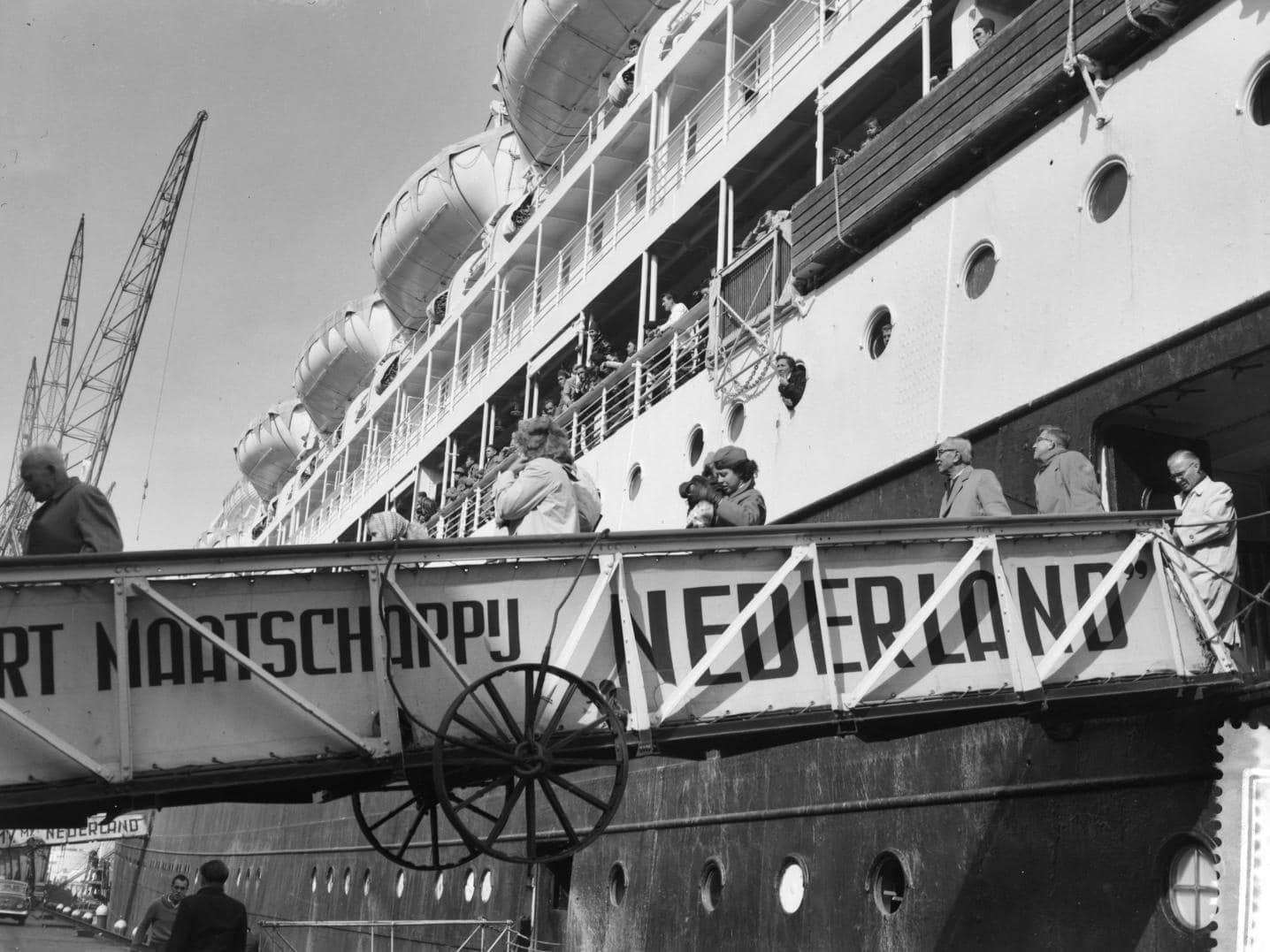 Arrival of the 'Johan van Oldenbarneveldt' with repatriates from Indonesia in Amsterdam on 24 March 1958
Arrival of the 'Johan van Oldenbarneveldt' with repatriates from Indonesia in Amsterdam on 24 March 1958© Wim van Rossem/Anefo via Wikimedia Commons
Infrastructure and architecture
All throughout the Indonesian archipelago, the Dutch had left their traces in cities, towns and landscapes, in the form of governmental buildings, houses, offices, religious edifices, plantations, industrial sites, harbours, canals, roads and railways. Many of these buildings were designed specifically to represent colonial authority, prosperity or superiority, with classicism and neoclassicism as favoured architectural styles. Gradually, however, buildings were adapted to the Dutch East Indies’ tropical climate and equipped with porticos and verandas, high ceilings, and ventilation openings.
A new building style called the ‘New Indies’ style combined Western and Indonesian elements and was mainly used in the early 20th century. After independence, Dutch public buildings were taken over by the Indonesian state and private properties were sold or appropriated. Interestingly, most of these buildings, which had been the symbol of the colonial state, were reused as Indonesian ministries, offices or museums rather than demolished.
Most of the Dutch buildings, which had been the symbol of the colonial state, were reused as Indonesian ministries, offices or museums rather than demolished
One example is the palace of the Governors-General of the Dutch East Indies in Jakarta. The signing of the Round Table Agreement in 1949 happened simultaneously in this palace and at the Royal Palace at Dam Square in Amsterdam, the Netherlands. Upon the transfer of sovereignty, the Jakarta palace was renamed Istana Merdeka (Independence Palace).
It became the palace of the president of Indonesia: Sukarno, the Republic’s first president, moved in the day after the signing ceremony. Upon welcoming him there, the Indonesian Interior Minister Ide Anak Agung Gde Agung emphasized the value of the building as the seat of power. He stated that the arrival of the President at the palace symbolized that the old (colonial) era had passed, and a new one (of Indonesia’s independence) had begun (Roem, 1997).
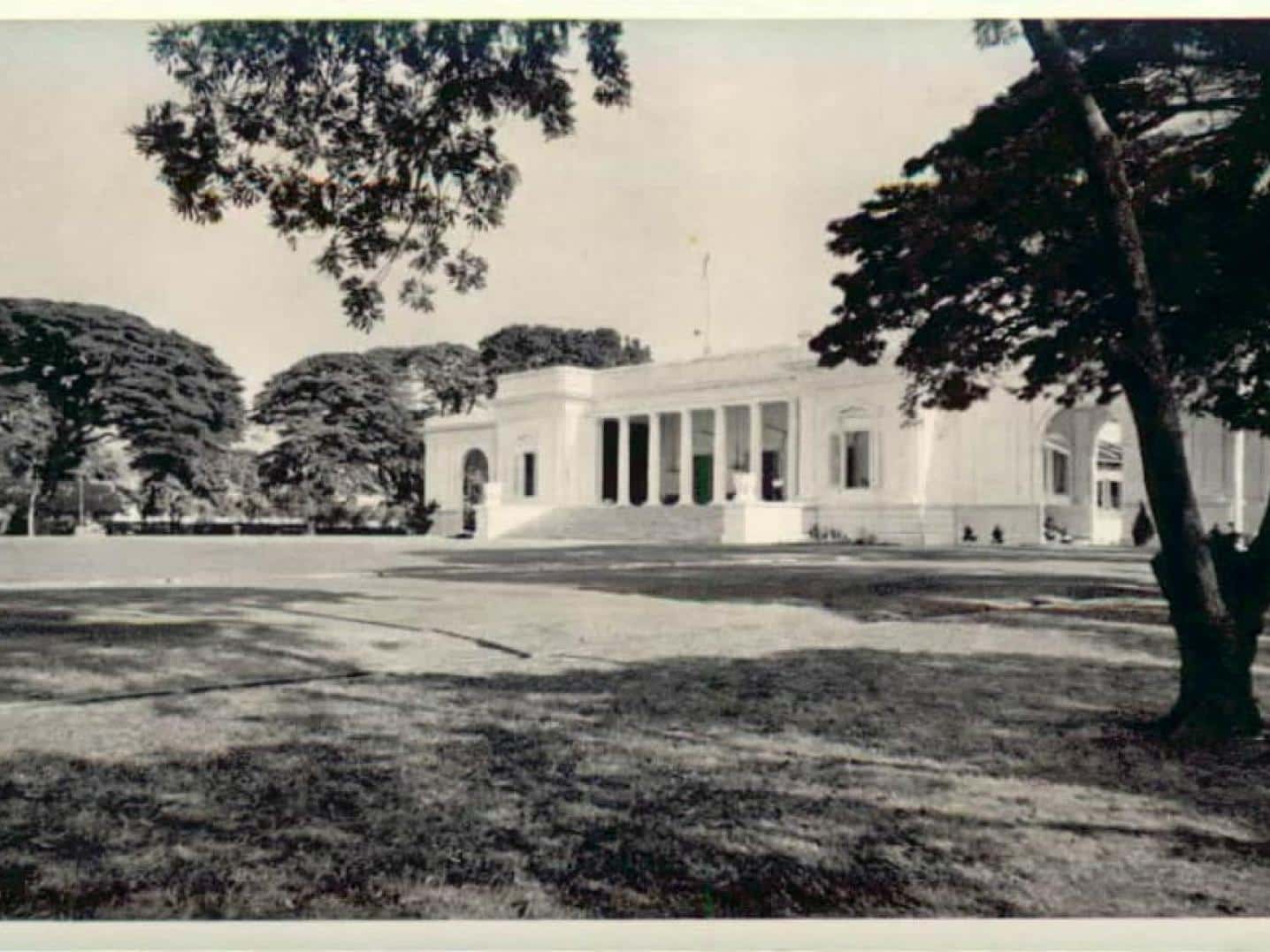 President Sukarno's Merdeka Palace in Jakarta 1950-1960
President Sukarno's Merdeka Palace in Jakarta 1950-1960© National Museum of World Cultures via Wikimedia Commons
Regulations and legislation
Although Indonesia had its own constitution which was effective within a few days after the proclamation, most supporting laws and regulations still had to be drafted and enacted. In the first years of Indonesian independence, the government focused more on the efforts to gain sovereignty and recognition from the international community. They also had to overcome various forces within the country that challenged their authority. Therefore, many Dutch regulations and legislations remained in place, among which were the Criminal Law Act, Civil Law Act, Commercial Law Act and Monument Act. These laws were all written in Dutch (Kanumoyoso, 2001).
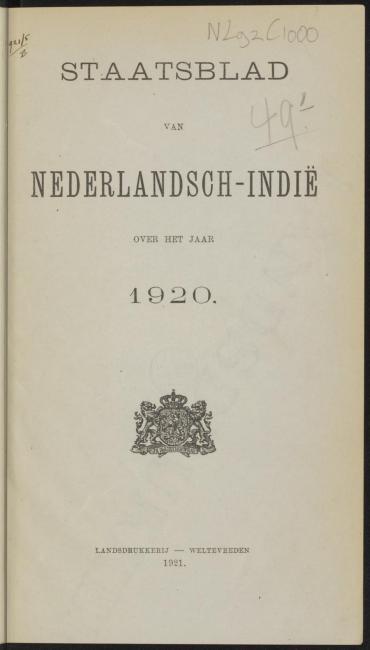 The cover of the 1920 Staatsblad van Nederlandsch-Indië, the official journal of the Dutch East Indies, which forms the basis of the Indonesian constitution
The cover of the 1920 Staatsblad van Nederlandsch-Indië, the official journal of the Dutch East Indies, which forms the basis of the Indonesian constitution© Delpher
Based on an inventory conducted by the National Legal Development Agency in 2011, there were about 380 regulations issued before 1942 which were still in force in Indonesia. Indeed, there have been some regulations from the colonial period that have been changed, but, in practice, the majority of the regulations from the colonial government are still applied in Indonesia.
Businesses as usual?
The 1949 Round Table Agreement included a guarantee that the presence of foreign (mainly Dutch) investment would be respected by the Indonesian government. This meant that private Dutch companies remained in control of key economic sectors in Indonesia. In other words, nothing changed: just like during the colonial period, Dutch companies were exporting Indonesian raw materials and products with maximum profits which did not benefit local economies or people’s living standards. The government realized that as long as these companies were at play, Indonesia would not obtain full sovereignty.
At the same time, Indonesian economists such as Mohammad Hatta, Syafruddin Prawiranegara, and Soemitro Djojohadikusumo asserted that Indonesia lacked capacities to manage major businesses. The Dutch colonial government had never invested in business administration education or training. As such, these economists concluded that the country realistically had little choice but to tolerate the presence of foreign companies. The Indonesian government regarded the situation as colonial and increasingly undesirable throughout the 1950s (Siahaan, 1996).
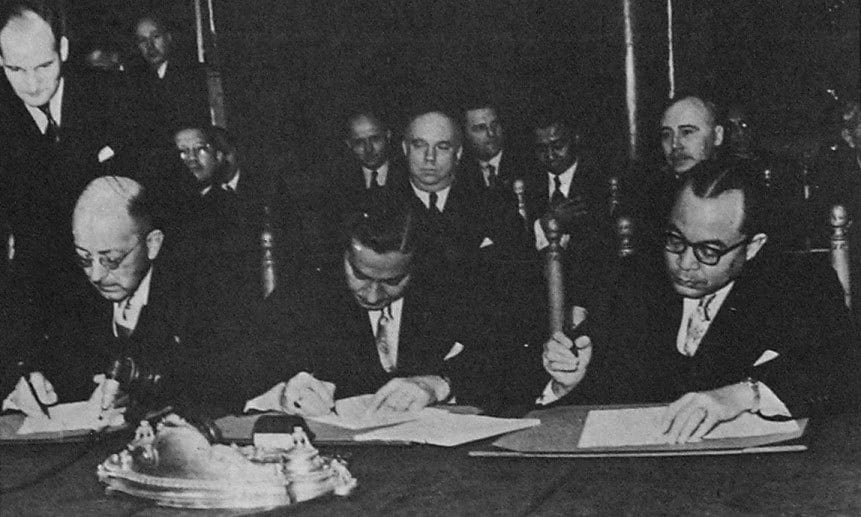 J.H. van Maarseveen, Sultan Hamid II and Mohammad Hatta signing the Dutch-Indonesian Round Table Agreement in Amsterdam, 2 November 1949
J.H. van Maarseveen, Sultan Hamid II and Mohammad Hatta signing the Dutch-Indonesian Round Table Agreement in Amsterdam, 2 November 1949© Davidelit via Wikimedia Commons
In December 1957, public sentiments came to an outburst in the form of major strikes by workers at Dutch companies. The Indonesian government used these to launch a nationalization campaign. Ironically, this was legally regulated through the colonial ‘Onteigeningsordonantie’ (Regulation for confiscation of property rights) no. 574 of 1920. This regulation allowed the government to take over Dutch companies which controlled the livelihoods of large groups of people, such as electricity companies, railway companies and telegram, post and communication companies (Kanumoyoso, 2001).
Boiling point
The bilateral relationship between Indonesia and the Netherlands deteriorated rapidly. In 1956, the Netherlands-Indonesian Union was dissolved: Queen Juliana was no longer the indirect head of state of Indonesia. Tensions regarding the Dutch presence in Western New Guinea reached a final boiling point. This is illustrated remarkably well by the fates of two state portraits: one of Queen Wilhelmina by Sierk Schröder (1947) and of Queen Juliana by Henricus Pol (1951). Both paintings were hanging in the Dutch High Commissioner’s Office in Jakarta. The High Commissioner was the highest-ranking diplomatic representative of the Netherlands in Indonesia after the transfer of sovereignty in 1949. The office was located in a colonial building owned by the Dutch State at Medan Merdeka Timur (formerly Koningsplein Oost) no. 3.
In early 1960 the Netherlands reinforced the defences of its last possessions in the Indonesian archipelago, which was not received well by Indonesia. On 6 May a demonstration by Indonesian students in front of the Dutch High Commissioner’s Office accumulated in the storming of the compound by circa eight hundred of them, in which furniture and office materials were destroyed, and the state portraits of Queen Wilhelmina and Queen Juliana were torn off the walls and heavily damaged. Both paintings were cut with knives, with Wilhelmina’s portrait receiving a vertical cut through the face, and Juliana’s a large horizontal cut across the chest. Interestingly, no mention of this incident has been found in contemporary Indonesian newspapers.
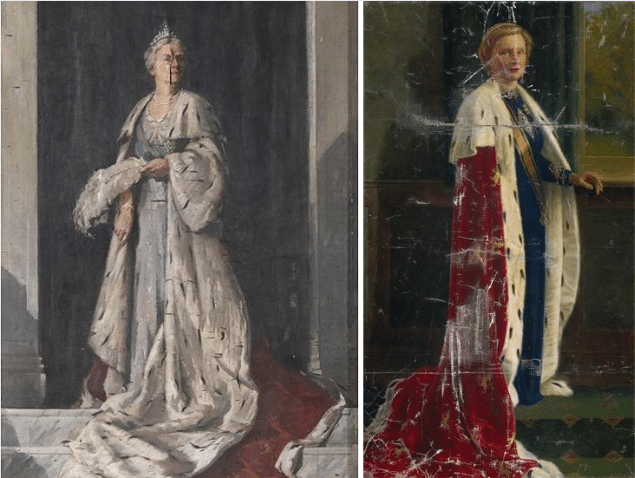 The damaged portraits of Queen Wilhelmina (Sierk Schröder, 1947) and Queen Juliana, (Henricus Rol, 1951)
The damaged portraits of Queen Wilhelmina (Sierk Schröder, 1947) and Queen Juliana, (Henricus Rol, 1951)© Rijksmuseum, Amsterdam
“The Netherlands out of Indonesia!”
A few months later, on Indonesia’s Independence Day on 17 August, Sukarno announced that he would break off all diplomatic relations with the Netherlands. The High Commissioners of both countries were recalled, and the offices closed. The damaged paintings were shipped back to the Netherlands, where they eventually became part of the collection of the Rijksmuseum. The damage to both paintings has not been restored on purpose, merely secured to prevent further deterioration: they symbolise an important chapter in the Dutch-Indonesian shared history (Stevens, 2015).
The portrait of Queen Juliana is currently stored in the Rijksmuseum’s depot. The portrait of Queen Wilhelmina however is part of the Canon of the Netherlands, which is a chronological summary of Dutch history for primary and secondary schools, consisting of fifty key topics that are updated periodically. As such, the painting is on display in the Netherlands Open Air Museum in Arnhem, its accompanying sign significantly titled The Netherlands out of Indonesia!
The damage to both paintings has not been restored on purpose
During the first fifteen years of Indonesia’s independence, the young republic tried to shake off the colonial yoke which had remained even after the transfer of sovereignty. The country finally obtained full sovereignty, economically and geographically, in 1960. This came at the price of the complete severing of diplomatic relations with the Netherlands.
The cultural colonial legacy the Dutch left in Indonesia however has remained. Cultural traces of the former colonizers, whether buildings, roads, laws, or language are still part of the country’s identity. This article did not even take into consideration the thousands of mixed Indo-Dutch (‘Indisch’) families living in both Indonesia and the Netherlands, who are direct descendants of the colonial period. Arguably because of these cultural connections, both countries found one another again soon: maybe even sooner than expected. The next article will discuss the complete turn-around in the Dutch-Indonesian cultural and diplomatic relations.
This article first appeared on DutchCulture and has also been published in Indonesian on Historia.id.
Continue reading
- The Story of the Erasmus Huis (1960-1971): The Great Diplomatic Turn
- The Story of Erasmus Huis (1970-present): Promoting Dutch Culture in the Heart of the Indonesian Capital
Sources
- Bank Indonesia, Laporan Tahun Pembukuan 1957-1960, Jakarta, 1960
- Bartlet, Anderson et. al, Pertamina, Perusahaan Minyak Nasional, Jakarta: Inti Idayu Press, 1986
- Glassburner, Bruce (ed.), The Economy of Indonesia: Selected Reading, Ithaca: Cornell University Press, 1971
- Kahin, Audrey, George McTurnan Kahin, Subversi Sebagai Politik Luar Negeri, Menyingkap Keterlibatan CIA di Indonesia, Jakarta: Pustaka Utama Grafiti, 199
- Kanumoyoso, Bondan, Nasionalisasi Perusahaan Belanda di Indonesia, Jakarta: Pustaka Sinar Harapan, 2001
- Oey Beng To, Sejarah Kebijakan Moneter Indonesia, Jilid I (1945-1958), Jakarta: Lembaga Pengembangan Perbankan Indonesia, 1991
- Pigay, Decki Natalis, Evolusi Nasionalisme dan Sejarah, Konflik Politik di Papua, Jakarta: Pustaka Sinar Harapan, 2000
- Roem, Mohammad, Bunga Rampai dari Sedjarah, Jakarta: Bulan Bintang (3 Vols.), 1997
- Siahaan, Bisuk, Industrialisasi di Indonesia: Sejak Hutang Kehormatan sampai Banting Stir, Jakarta : Pustaka Data, 1996
- Stevens, Harm, Bitter spice: Indonesia and the Netherlands from 1600,
Nijmegen: Vantilt, 2015 - Tobing, K.M.L, Perjuangan Politik Bangsa Indonesia: K.M.B, Jakarta: Haji Masagung, 1997





